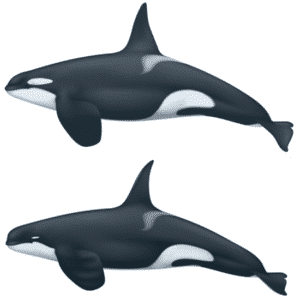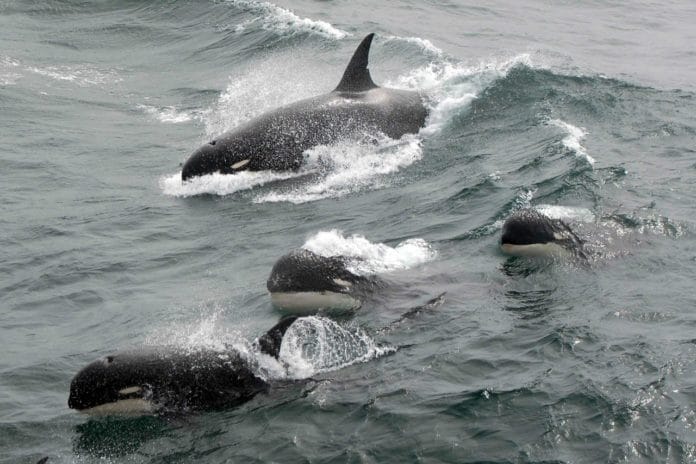While working off the tip of southern Chile, scientists at the NOAA Fisheries have got their first live look at what might be a new species of killer whale. Also known as Type D the whales were previously known only from a beach stranding more than 60 years ago.
Scientists collected the samples to determine if this animal, with its distinctly different color pattern and body shape, is indeed new to science.
According to Bob Pitman, a researcher from NOAA Fisheries’ Southwest Fisheries Science Center in La Jolla, California, Type D killer whales could be the largest undescribed animal left on the planet.

He said, “This discovery also indicates how little we have knowledge about life in our oceans.”
Scientists encounter with the distinctive whales came after they spent more than a week at anchor, waiting out the perpetual storms of Cape Horn off southern Chile. It was here that the scientists collected three biopsy samples — tiny bits of skin harmlessly taken from the whales with a crossbow dart — from a group of Type D killer whales.
Pitman said, “Unraveling the secrets of these unique killer whales has now moved from the blustery Southern Ocean to the laboratory, where NOAA scientists will analyze DNA from the skin samples. These samples hold the key to determining whether this form of killer whale represents a distinct species.”
The first record of the unusual killer whales came in 1955 when 17 animals stranded on the coast of Paraparaumu, New Zealand. Comparing with other whales, the killer whales, and more rounded heads, a narrower and more pointed dorsal fin, and a tiny white eyepatch.
Scientists primarily thought that this unique look may have been a genetic aberration just found in those stranded whales. At that point, in 2005, a French researcher indicated Pitman photos of odd-looking killer whales that had taken fish from commercial fishing lines close Crozet Island in the southern Indian Ocean. They had the equivalent little eye patches and bulbous heads.
For Pitman, the hunt was on. Last year, he assembled a team to go to Cape Horn, in Chile, to look for what’s now technically called the “type D” killer whale. Local fishers had been complaining that some kind of whale was stripping fish off their lines.
NOAA biologist Lisa Ballance, who’s married to Pitman, was part of the team. “From the beginning, I had referred to it as the needle in the haystack. It’s a big ocean, and it’s a rough ocean.”
“It was a slow start. Their ship at Cape Horn was trapped at anchor for eight days by howling weather. But then they got a 12-hour quiet spell. We left that night and pounded into the seas so that we could get to our spot at first light the next morning.”
Pitman said, “The sun came up in the morning at 5:50. We had type D killer whales swimming around our boat.”
There they were, “Ballance recalls, for a moment at a loss for words. “Uh … I can’t even … it was thrilling for all of us.” Pitman adds: “It’s like seeing a dinosaur or something. It’s one of those moments that biologists live for. And I said, ‘That’s it! That’s the New Zealand killer whale.'”
Ballance said, “There was no mistaking its peculiar look. Visibly, this form is the most unusual and distinct form of a killer whale on the planet.”
Later, they realized why the whales swam up to them. The team had lowered an underwater microphone over the side on a long cable, with cameras attached.
Pitman says “it must have looked like a fishing line with fish on it — it looked like breakfast. And you can imagine them thinking, ‘Hey, where’s our fish?’. But that was definitely the way to bring them to the boat.”
The team was able to snip off small tissue samples from the whales by firing a harmless dart, attached to a line, into their skin. An analysis of the DNA will determine if this is actually a completely new species or just an unusual subtype.
The Type D killer whale images brought back by team Australis serve as a reminder of how little we know about life in our oceans. In the next few months, the DNA samples should finally reveal just how different Type D is from other killer whales.
